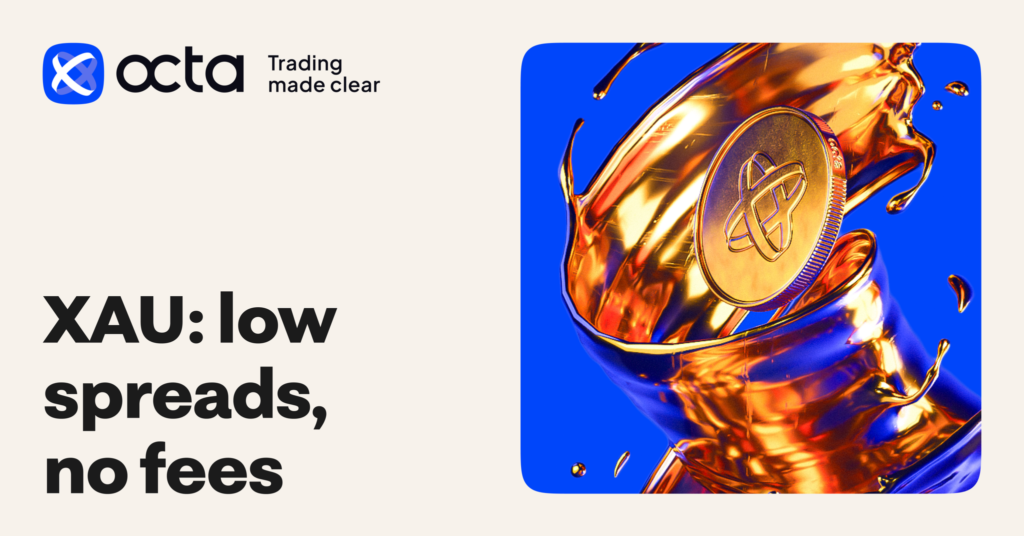Forex Market Cycles: Distribution, Trend, and Accumulation
“Markets are dynamic environments where prices are influenced by the forces of supply and demand. Over time, these forces cause prices to follow certain patterns, often referred to as “market cycles.“”
Click the play button to listen to audio
Table Of Contents
Markets are dynamic environments where prices are influenced by the forces of supply and demand. Over time, these forces cause prices to follow certain patterns, often referred to as “market cycles.” Understanding these cycles is crucial for traders seeking to profit from price movements.
The three primary market phases—Distribution, Trend, and Accumulation—are key to understanding how markets move. These phases represent distinct periods in the life of a market, each with its own characteristics and implications. By mastering these phases, traders can make more informed decisions and better time their entries and exits.
In this educational piece, we will explore these phases in-depth, breaking down their characteristics, how to identify them, and how traders can use this knowledge to refine their trading strategies. We will also touch on Wyckoff’s method, which provides a framework for understanding the relationship between price and volume throughout these phases.

New to forex?
Learn how to trade forex with our PhD membership, it is the complete beginner’s guide to forex trading.

Become a diamiond trader
Cut through the noise to find the exact diamond techniques one top 1% traders know about.

New to crypto?
Skip the hype and plug into the exact strategies smart traders use to build wealth in digital assets.
Distribution: The Cause
What is Distribution?
The Distribution Phase marks the end of a trend and signals the beginning of a potential price reversal. It is the period where market participants, particularly institutional traders, distribute their positions to retail traders who are eager to buy at high prices. This phase is characterized by increased volume, often seen near market tops.
Characteristics of the Distribution Phase
High-Volume Local Top (Buying Climax):
The distribution phase typically begins with a Buying Climax or Bull Climax. This is when prices reach new highs, and there is a surge in buying activity. However, despite the high volume, the price starts to stall or show signs of exhaustion.
Secondary Top:
After the buying climax, a secondary top may form. This secondary top is often higher than the first, but it fails to hold the price at that level for long. Sellers begin to step in, but the price is still temporarily buoyed by optimism from retail traders.
Change of Character (CHoCH):
A critical concept in the distribution phase is the Change of Character (CHoCH). This occurs when the market shifts from a bullish to a bearish structure. The tops formed during the distribution phase are sold off faster than in typical markup cycles. A Failed Rally (UT), where the price is rejected at key resistance areas, signifies the start of a downturn.
Low-Volume Throwback (SOW):
A SOW (Sign of Weakness) typically follows the failed rally. During this phase, prices may retrace to previous support levels but do so on low volume. This indicates that there is no strong buying interest to support the market at these levels, signaling that the trend is likely reversing.
End of Distribution and Start of Markdown:
Once distribution ends, the market enters the Markdown Phase, where prices begin to decline more rapidly as previous buyers attempt to exit their positions.
Trend: The Effect
What is a Trend?
A Trend is the direction in which the market moves over time. In technical analysis, trends are classified as uptrends, downtrends, and sideways trends. Understanding the nature of the trend is critical for making informed trading decisions.
There are two primary types of trends:
Mark-Up Trend: The phase in which prices rise as demand increases and sellers are unwilling to sell.
Mark-Down Trend: The phase in which prices fall as buyers exit the market and sellers dominate.
Mark-Up vs. Mark-Down
Mark-Up Phase:
The Mark-Up phase occurs when demand exceeds supply, pushing prices higher. During this phase, early buyers are holding their positions, unwilling to sell, and new buyers enter the market, further fueling the rise in price.
Mark-Down Phase:
The Mark-Down phase follows when prices start to fall. In this phase, previous buyers begin to exit, selling off their positions to cut their losses. New buyers hesitate, unsure whether prices will continue to drop or reverse.
Chart Example: A downtrend features lower highs and lower lows, signaling the market’s decline.
Accumulation: The Cause
What is Accumulation?
The Accumulation Phase is the opposite of distribution. It occurs after a prolonged downtrend, and it is during this phase that the market begins to find support, with institutions and savvy traders quietly accumulating positions before the next uptrend.
Characteristics of the Accumulation Phase
Phase A: Bear Climax or Selling Climax:
The accumulation phase often starts with a Selling Climax or Bear Climax, where prices fall sharply, and a large number of sellers exit the market. This typically leads to a sharp price drop that forms the market’s local bottom.
Phase B: High-Volume Bounce (Creek):
In this phase, the market sees a Creek or a high-volume bounce from the support level. This is a critical point as it marks the beginning of potential reaccumulation.
Phase C: Spring:
The Spring occurs when the market attempts to break lower, but fails, and price quickly reverses with higher volume. This is a low-volume drop that is often mistaken for a continuation of the downtrend but is instead a false breakout.
Phase D: Resistance Breakout:
In this phase, the market breaks through a key resistance level with volume, signaling the beginning of an uptrend. This is the first sign that accumulation has been successful and that demand is now outweighing supply.
Phase E: Mark-Up Begins:
Once resistance is broken, the market enters the Mark-Up phase, where prices begin to rise, often supported by strong buying interest.
Wyckoff Pause Ranges and Re-Accumulation
Wyckoff Pause Ranges
The Wyckoff Pause Range refers to a period where price action halts, consolidates, or moves sideways. These pauses occur during or between trends and can signal either re-accumulation or re-distribution.
Re-Accumulation vs. Re-Distribution
Re-Accumulation: After an initial mark-up phase, prices may enter a pause range, where the market consolidates before moving higher. Common patterns include Shakeouts, where price temporarily drops to gather more liquidity before resuming the uptrend.
Re-Distribution: Similar to re-accumulation, but with a bearish bias. The market may consolidate before resuming a downtrend.
Understanding the phases of distribution, trend, and accumulation is crucial for traders looking to time their entries and exits effectively. Recognizing the signs of each phase and the market psychology behind them allows traders to make more informed decisions.
By using these insights in conjunction with technical analysis tools, traders can refine their strategies and improve their market predictions. Whether you’re using Wyckoff’s method or simply observing price action and volume, mastering these market phases is a key step towards becoming a successful trader.
Key Indicators to Identify Market Phases
Understanding market phases is not just about observing price movements; it’s also about interpreting key indicators that signal the shift from one phase to another.
Volume Analysis
Volume is one of the most critical tools to gauge the strength and direction of price movements. In both distribution and accumulation phases, volume plays a pivotal role in confirming price action. High volume signals the involvement of institutional players, while low volume indicates that the market is either consolidating or experiencing a lack of interest from significant market participants.
Distribution Phase:
In the distribution phase, you’ll typically see a volume spike during the buying climax, followed by decreasing volume as price moves lower. A high-volume rally followed by a sharp rejection is one of the clearest signs that the market may be entering a distribution phase.
Accumulation Phase:
During accumulation, you often observe higher-than-average volume during periods when price reverses from the bottom. Additionally, you may see low-volume declines in Phase C (Spring) before a price breakout.
Support and Resistance Zones
Support and resistance levels are vital in understanding market phases, especially when identifying the end of one phase and the beginning of the next. These levels mark where price action often reverses, and when broken, they can signal a transition into a new phase.
During Distribution:
Sellers will push prices into resistance zones and often test the same resistance level multiple times. If the price breaks below a key support level after a failed rally, it could mark the end of the distribution phase.
During Accumulation:
Buyers will push prices into support zones and may test the same level multiple times. Once the price breaks through a resistance level with high volume, it signals that accumulation has ended, and the mark-up phase may begin.
Moving Averages
Moving averages, particularly the 50-period and 200-period moving averages, can help identify the overall trend direction during market phases. When the price is above the moving averages, it’s an indication that the market is in a bullish trend, which typically aligns with the mark-up phase. Conversely, when the price is below the moving averages, it suggests a bearish trend, consistent with the markdown phase.
During Distribution:
The price may briefly rise above the moving averages during the distribution phase but ultimately fail to hold, indicating that the market is transitioning into a downtrend.
During Accumulation:
When prices rise above the moving averages after having been in a prolonged downtrend, it marks the end of accumulation and the start of the mark-up phase.
Using Wyckoff’s Method to Improve Trading Decisions
The Wyckoff Method is a popular technical analysis tool that helps traders analyze market cycles. It focuses on understanding the relationship between price and volume and how they interact to form specific patterns. By studying these patterns, traders can anticipate the next market move.
Key Principles of Wyckoff’s Method:
The Law of Supply and Demand:
This law states that when demand exceeds supply, prices rise (mark-up), and when supply exceeds demand, prices fall (mark-down).
The Law of Cause and Effect:
A cause (accumulation or distribution) will create an effect (a trend). The duration and intensity of the accumulation or distribution phase will determine the length of the trend that follows.
The Law of Effort vs. Result:
This law emphasizes the importance of volume in confirming price action. A large price movement with low volume may indicate a false breakout, while a smaller price move with high volume signals strong market conviction.
How to Apply Wyckoff’s Method:
Identify the Phases: Use volume and price action to identify the distribution and accumulation phases.
Observe Volume at Key Points: Watch for volume surges during the buying climax and selling climax, as well as during key support and resistance tests.
Timing the Breakouts: Look for breakouts from accumulation or distribution zones as signals of a new trend.
Practical Examples and Case Studies
To further solidify the understanding of market phases, let’s analyze a few real-life case studies where distribution, trend, and accumulation phases can be clearly identified on historical price charts.
Case Study 1: Stock Market Distribution Phase
Let’s take the example of a popular stock during its final phase before a major sell-off. The stock experiences a sharp price rise (Mark-Up) but eventually peaks, forming a buying climax. Afterward, the price starts to show signs of exhaustion and a Change of Character (CHoCH), followed by a high-volume selling climax (Distribution). A failure to break above resistance sets the stage for a significant markdown, leading to a sharp decline in price.
Case Study 2: Cryptocurrency Accumulation Phase
In a cryptocurrency market that has been in a downtrend, prices start to stabilize, and volume decreases during the lower lows. This forms an accumulation phase, with a spring event (a failed drop) marking the bottom of the market. Following the spring, a breakout above resistance with increased volume signals the start of the Mark-Up phase, leading to significant gains in the market.
Key Takeaways
By recognizing and understanding market phases—Distribution, Trend, and Accumulation—traders can improve their ability to time entries and exits, enhance their risk management strategies, and increase their chances of success in the market. Here are the key takeaways from this post:
Market Phases are Predictable: By analyzing price action, volume, and market psychology, traders can identify the different phases and make informed decisions.
Volume is Crucial: Volume helps confirm whether a trend is sustainable or likely to reverse. Pay close attention to volume during buying and selling climaxes.
Wyckoff’s Method Offers a Comprehensive Framework: Wyckoff’s method provides a structured approach to understanding market cycles and can be a valuable tool for traders looking to master market phases.
Technical Indicators Complement Market Phases: Using tools like moving averages, support and resistance zones, and volume analysis alongside market phase recognition can offer a more comprehensive trading strategy.
Further Reading and Links
Get Early Access Today!
Be the first to explore our latest features and exclusive content tailored for you.
By clicking “Subscribe”, you accept our Terms and Conditions.
Table Of Contents
Premium Materclass
Full 1 Year Mentorship on Forex Trading
Professional-level insights with Inner Circle Traders (ICT) strategies, mastering precision trading techniques used by institutional investors
Learn More...





